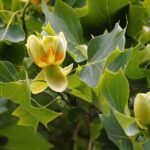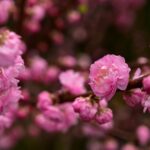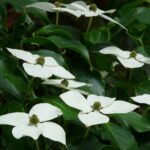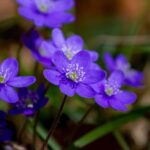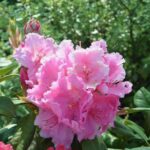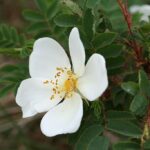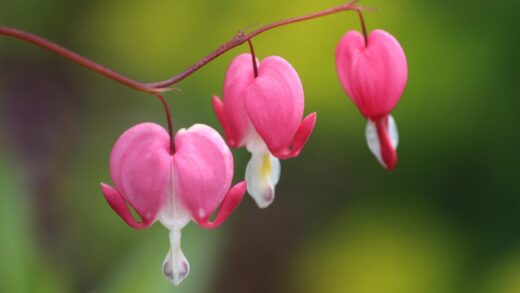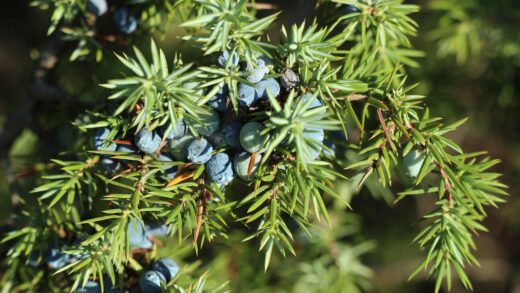The phenomenal growth rate of the Chinese empress tree is a direct reflection of its substantial appetite for essential nutrients. To fuel its rapid development, which can see it gain several meters in height in a single season, the tree must have access to a consistent supply of nutrients from the soil. While it is adaptable and can survive in poor soils, its growth will be stunted and its overall health compromised without adequate nutrition. Therefore, understanding the specific nutrient requirements of Paulownia tomentosa and implementing a proper fertilization strategy is fundamental to cultivating a truly magnificent and vigorous specimen.
The three primary macronutrients that are most critical for the empress tree are nitrogen (N), phosphorus (P), and potassium (K). Nitrogen is arguably the most important nutrient for this species, as it is a key component of chlorophyll and is essential for vegetative growth, directly fueling the development of its large leaves and long shoots. Phosphorus plays a vital role in root development, energy transfer, and flowering, making it crucial for establishing a strong foundation and ensuring a good bloom display. Potassium contributes to the overall vigor of the tree, regulating water movement, enhancing disease resistance, and improving its tolerance to environmental stresses like cold and drought.
In addition to these macronutrients, the empress tree also requires a range of secondary nutrients and micronutrients, albeit in smaller quantities. These include calcium, magnesium, and sulfur, as well as trace elements like iron, manganese, and zinc. A deficiency in any of these nutrients can lead to specific symptoms, such as chlorosis (yellowing of leaves), stunted growth, or poor flowering. A balanced approach to fertilization that supplies a complete range of nutrients is therefore the most effective way to ensure the tree’s optimal health and performance.
The best way to determine the specific nutrient needs of your tree is to start with a soil test. A soil test provides a detailed analysis of the existing nutrient levels and the soil’s pH, which affects the availability of those nutrients to the tree’s roots. The results of the test will guide you in selecting the most appropriate fertilizer and application rate, preventing the guesswork that can lead to either under-fertilization or, more harmfully, over-fertilization. This scientific approach allows for a targeted and efficient nutrient management program tailored to your specific site conditions.
Understanding fertilizer types
When it comes to fertilizing your empress tree, you will encounter a wide array of options, which can be broadly categorized into synthetic and organic fertilizers. Synthetic fertilizers are manufactured chemical products that provide nutrients in a concentrated, readily available form. They are often formulated with specific N-P-K ratios, such as 10-10-10 or 20-20-20, which indicate the percentage of nitrogen, phosphorus, and potassium they contain. These fertilizers can provide a quick boost of nutrients to the tree, which can be beneficial for correcting a specific deficiency or promoting rapid growth in young plants.
More articles on this topic
Organic fertilizers, on the other hand, are derived from natural sources such as compost, animal manures, bone meal, blood meal, and fish emulsion. These materials release their nutrients more slowly as they are broken down by microorganisms in the soil. This slow-release characteristic provides a more sustained feeding for the tree and greatly reduces the risk of fertilizer burn or nutrient runoff. Furthermore, organic fertilizers also improve the soil structure, increase its water-holding capacity, and foster a healthy ecosystem of beneficial soil microbes, contributing to the long-term health of the soil and the tree.
Fertilizers also come in different formulations, including granular, liquid, and spikes. Granular fertilizers are dry pellets that are typically spread over the soil surface around the tree and watered in. They can be either quick-release or slow-release, with the latter being a popular choice for trees as they provide a steady supply of nutrients over several months. Liquid fertilizers are mixed with water and applied to the soil, providing nutrients that are immediately available to the roots. Tree fertilizer spikes are solid, compressed forms of fertilizer that are driven into the ground around the tree’s dripline, releasing nutrients slowly over time.
For the empress tree, a balanced, slow-release granular fertilizer is often the most practical and effective choice for annual feeding. It provides the sustained nutrition needed to support its long growing season without the risk of burning the roots. This can be supplemented with organic matter like compost, which provides a broader range of micronutrients and soil-conditioning benefits. The choice between synthetic and organic often comes down to personal preference and gardening philosophy, but both can be used effectively to meet the tree’s nutritional needs.
The best time to fertilize
Timing is a critical factor in any effective fertilization program. The goal is to provide nutrients when the tree needs them most and can actively absorb and utilize them. For the Chinese empress tree, the most important time for fertilization is in the early spring, just as the soil begins to warm up and before the new season’s growth commences. Applying fertilizer at this time ensures that a ready supply of nutrients is available to the tree’s roots to fuel the initial, powerful surge of growth, including the development of its flowers and leaves.
More articles on this topic
A single application of a slow-release granular fertilizer in early spring is often sufficient for the entire year. The nutrients will be gradually released over the following months, matching the tree’s ongoing needs throughout the peak growing season of spring and summer. This approach provides the steady, consistent nutrition required to sustain its rapid development. Spreading the granules evenly over the ground, starting about a foot away from the trunk and extending out to the tree’s dripline (the edge of its canopy), ensures that the fertilizer reaches the active feeder roots.
It is generally advised to avoid fertilizing the empress tree late in the summer or in the autumn. Applying fertilizer, especially one high in nitrogen, late in the growing season can stimulate a flush of new, tender growth. This late-season growth does not have sufficient time to harden off and mature before the first frosts of winter arrive. As a result, it is extremely vulnerable to frost damage, which can harm the tree and create entry points for diseases. Ceasing fertilization by mid-summer allows the tree to naturally slow its growth and begin the process of preparing for winter dormancy.
When a tree is first planted, it is often best to refrain from heavy fertilization during its first year. The primary focus for a newly planted tree is to establish a strong root system, and its initial nutrient needs are usually met by the soil in the prepared planting hole, especially if it was amended with compost. Applying too much fertilizer too soon can burn the sensitive, developing roots. A very light application of a starter fertilizer with a higher phosphorus content can be beneficial, but the main feeding program should begin in the second spring after planting.
How to apply fertilizer correctly
Proper application technique is just as important as choosing the right fertilizer and timing. Incorrect application can be ineffective at best and harmful to the tree and the environment at worst. The most common and effective method for fertilizing established trees is broadcasting granular fertilizer over the root zone. The majority of a tree’s feeder roots, which are responsible for nutrient absorption, are located in the top 12-18 inches of soil and extend from near the trunk out to the dripline and beyond. Therefore, the fertilizer should be distributed over this entire area, not just concentrated at the base of the trunk.
Before applying the fertilizer, it is a good idea to lightly water the area if the soil is very dry. This helps the nutrients to begin dissolving and moving into the soil. Read the product label carefully to determine the correct application rate for the size of your tree. It is always better to err on the side of caution and apply slightly less than the recommended amount rather than too much. Using a handheld spreader can help ensure an even distribution of the granules over the large surface area of the root zone. After spreading the fertilizer, it should be watered in thoroughly to move the nutrients down into the soil where the roots can access them.
It is important to avoid letting the granular fertilizer come into direct contact with the tree’s trunk, as the concentrated chemicals can cause burns to the bark. Always start your application about a foot away from the trunk. Similarly, avoid applying fertilizer when the foliage is wet, as granules that stick to wet leaves can cause leaf scorch. The ideal time for application is before a gentle, steady rain is forecast, as this will naturally and effectively water the fertilizer into the soil for you.
For those using organic amendments like compost or well-rotted manure, the application is simpler and more forgiving. These materials can be spread as a top-dressing in a layer that is one to two inches thick over the root zone in the spring. There is very little risk of burning the tree with these materials. Gently raking the compost into the top inch of soil can help incorporate it more quickly, but simply leaving it on the surface to be worked in by worms and weather is also effective. This method not only feeds the tree but also continuously improves the quality of the soil over time.
Recognizing nutrient deficiencies
Observing your empress tree’s leaves can often provide clues about its nutritional health. A nutrient deficiency occurs when the tree is unable to take up a sufficient quantity of an essential nutrient to meet its metabolic needs, and this often manifests as a visible symptom, most commonly in the foliage. One of the most common deficiencies is a lack of nitrogen, which typically causes a general yellowing, or chlorosis, of the leaves, starting with the older, lower leaves on the branches. Since nitrogen is mobile within the plant, the tree will move it from older tissues to support new growth, hence the pattern of yellowing.
Iron deficiency is another common issue, particularly in alkaline soils where the high pH makes iron chemically unavailable to the tree’s roots. Unlike nitrogen deficiency, iron chlorosis typically appears on the youngest, newest leaves first. The classic symptom is intervenal chlorosis, where the leaf tissue turns a pale yellow or even white, but the veins of the leaf remain green. This distinctive pattern is a strong indicator that the tree is struggling to absorb enough iron to produce chlorophyll.
Deficiencies in other nutrients can cause different symptoms. For example, a phosphorus deficiency can sometimes lead to a purplish discoloration of the leaves and stunted growth, while a potassium deficiency may cause yellowing and necrosis (browning and death of tissue) along the margins of the older leaves. It is important to note that these visual symptoms can sometimes be caused by other factors as well, such as poor drainage, soil compaction, or disease, so a soil test is often necessary for an accurate diagnosis.
If a nutrient deficiency is suspected, the first step should be to check the soil pH, as an improper pH is often the root cause of the problem. If the pH is too high or too low, certain nutrients become “locked up” in the soil, and the tree cannot absorb them even if they are present in sufficient quantities. Adjusting the soil pH to the preferred range for Paulownia (6.0 to 7.5) can often resolve the deficiency without the need for additional fertilizer. If the pH is correct and a deficiency is confirmed by a soil test, then a targeted application of the specific nutrient that is lacking is the most effective solution.








